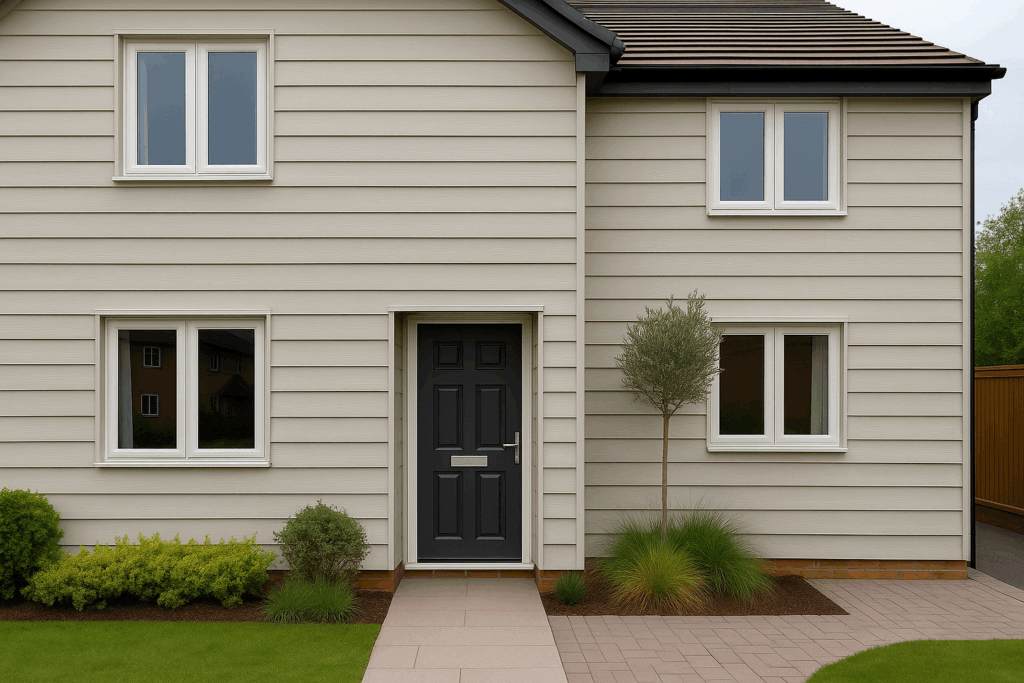Do you need planning permission to add cladding to your house?
The question of whether you need planning permission to add cladding to your house is a regular one. But what are the facts?
If you look at websites from companies that sell cladding, you could be forgiven for thinking that you do not need planning as it is always PD.
If only life was that simple!

Cladding as permitted development?
Class A of Part 1 of the GPDO says that you can add cladding to your property as long as it is a house or bungalow. Note that a building with one or more flats does not have this right. Nor does it apply to a house created under say Class Q. Finally it does not apply to Article 2(3) land which includes National Park, National Landscapes(AONB), the Broads,Conservation areas, or World Heritage Sites.
But it also says ‘the materials used in any exterior work (other than materials used in the construction of a conservatory) must be of a similar appearance to those used in the construction of the exterior of the existing dwellinghouse;‘
Class A does not say that the materials must be the same as those used in the construction of the existing house. It says they must be of similar appearance. So similar looking bricks or other finishes.
The Technical Guidance document issued by the government says ‘The condition above is intended to ensure that any works to enlarge, alter or improve a house result in an appearance that minimises visual impact and is sympathetic to existing development. This means that the materials used should be of similar visual appearance to those in the existing house, but does not mean that they need to be the same materials. ‘
Therefore the answer as to whether you can add cladding under permitted development or require planning permission, is answered by the question ‘Do you already have cladding as part of the construction of your home?‘ (not as a subsequent planning decision to add cladding).
If the answer is yes, you may add cladding to the dwelling under permitted development, subject to you having Class A rights. But again it should be a similar finish to existing cladding. If timber cladding has been used in the construction, this is what you must use elsewhere.
If the answer is no, you will require householder planning permission to add cladding to your home. Planning Geek can assist you with this application if required. Complete this form for help.
Importantly Class A also says you may not extend your property in any way to the principal elevation. In the eyes of the local authority, you might be caught by this adding cladding. The one exception to this is adding solid wall insulation which constitutes an improvement rather than an enlargement or extension.
If in any doubt, always follow the legislation, which can be found here for Class A or Part 1 of the General Permitted Development Order 2015 (as amended) or GPDO for short.
Note that the same rules will apply to adding stone, artificial stone, pebble dash, render, timber, plastic or tiles or any other wall covering to your house. Painting of the house is covered under Class C of Part 2 of the GPDO.
Removal of Class A rights
If the local authority has removed Class A rights, which also includes extensions, you will require planning permission to add cladding. This may be common on newer build properties or as a result of a previous planning application on the property. So always check.
Alterations to dwellings, may also be restricted via an Article 4 affecting your property.
Always understand any restrictions on your dwelling, so you do not fall foul.
As mentioned above, Class A rights are automatically removed on flats, and houses created under Class G, M, MA, N, P, PA or Q. and cladding is not allowed on Article 2(3) land which includes National Park, National Landscapes(AONB), the Broads,Conservation areas, or World Heritage Sites.
Enforcement
Should the local authority decide that you are in breach of your permitted development rights and did need planning, they have the right to enforce. This is now a 10 year period, unless the works were substantially complete before 25th April 2024.
They may invite you to submit retrospective planning. Although they are not obliged to offer or accept this. They may simply ask for the removal of the cladding and for reinstatement of the pervious wall finishing.
If you need help with a retrospective application or enforcement, please reach out to us. We are here to help!
Certificate of Proposed Use or Development
If you are concerned about whether you can have cladding on your home, you might wish to submit an application for a certificate of proposed use or development. Planning Geek can assist you with this application if required.
Please complete this form if we can help.
I have seen cases where people have asked if they can add it via email, only to be told yes – then another officer has said no. Unfortunately the officer that said yes, does not give you the ability to go ahead and you could still be subject to enforcement even if a planning officer gives incorrect advice. So our standing advice is not to ask the local authority unless it is via an application.
Updated: 15th May 2025
Other Common Projects
Many more projects to come....



